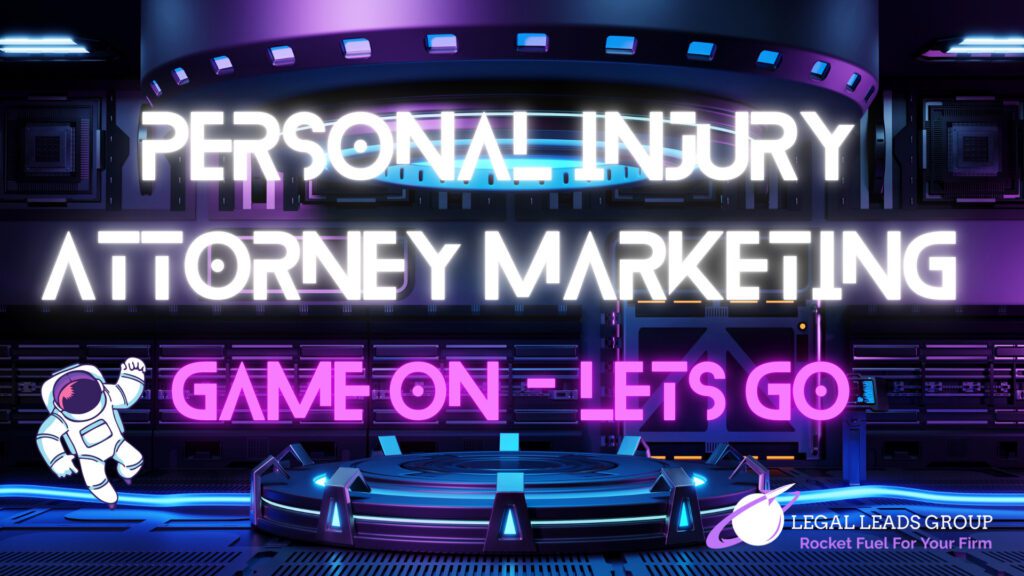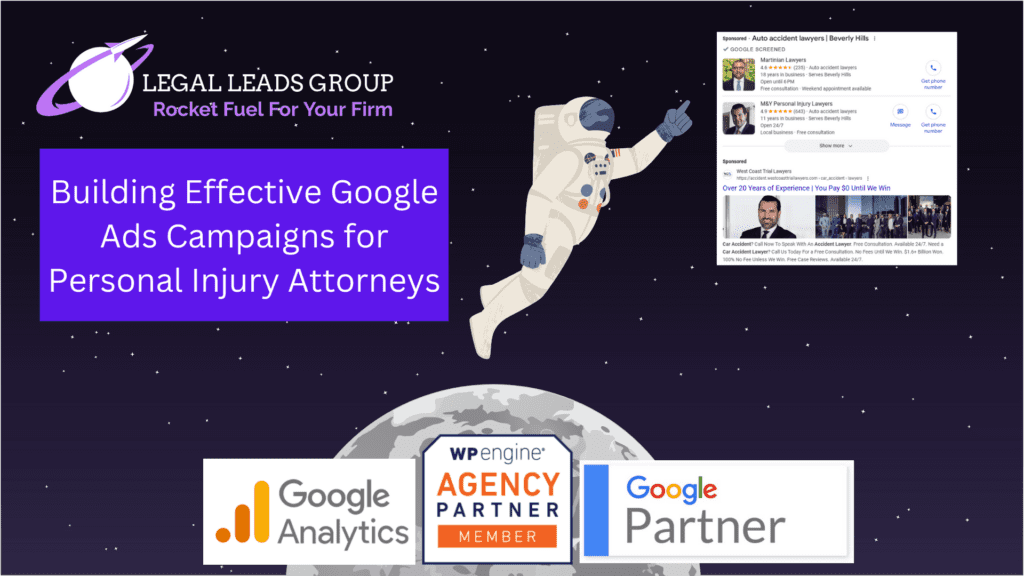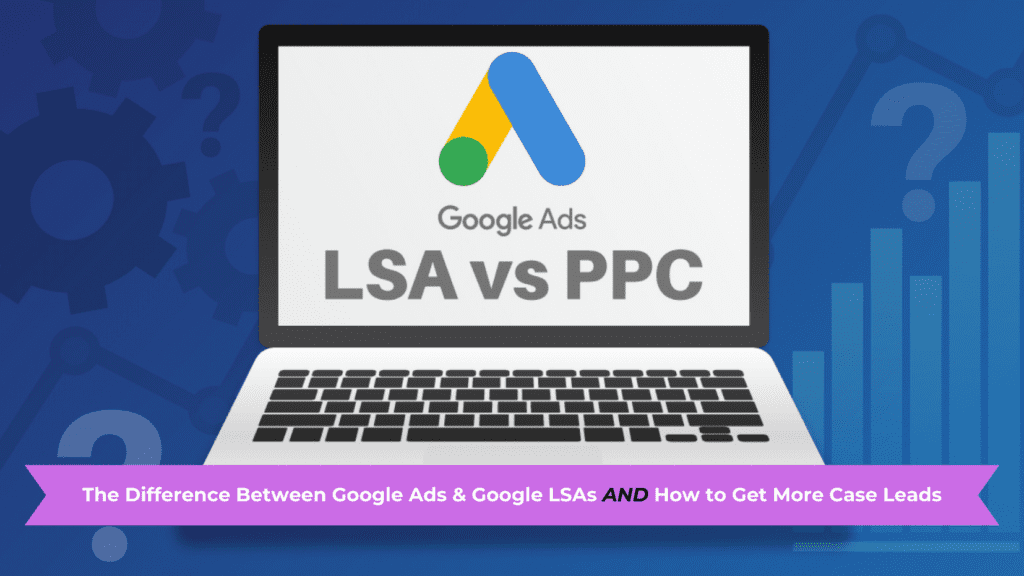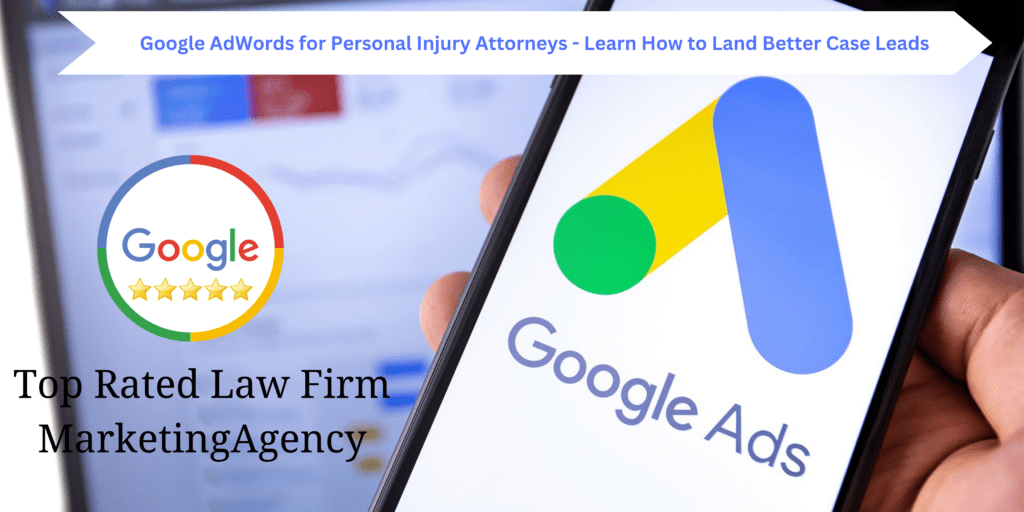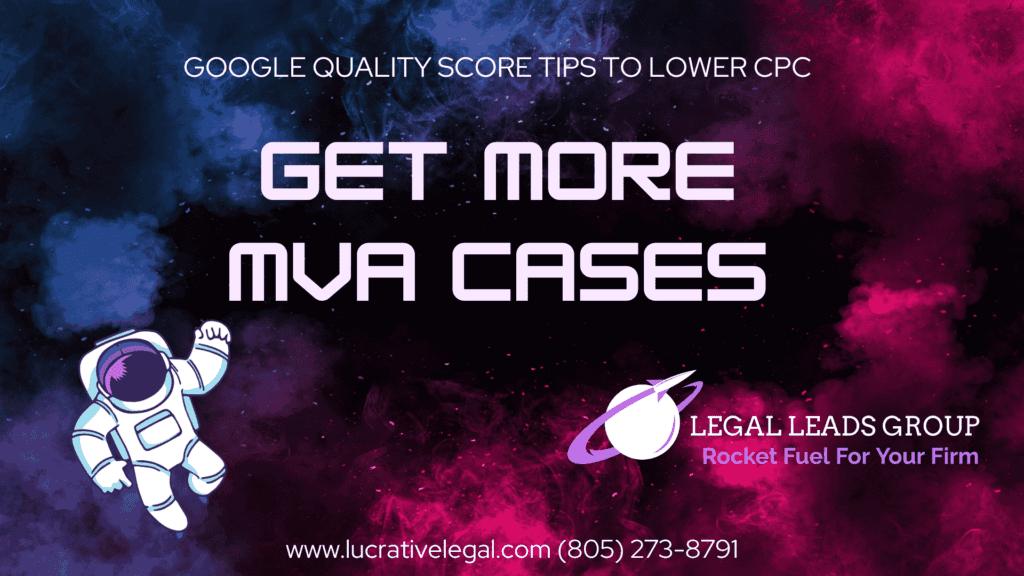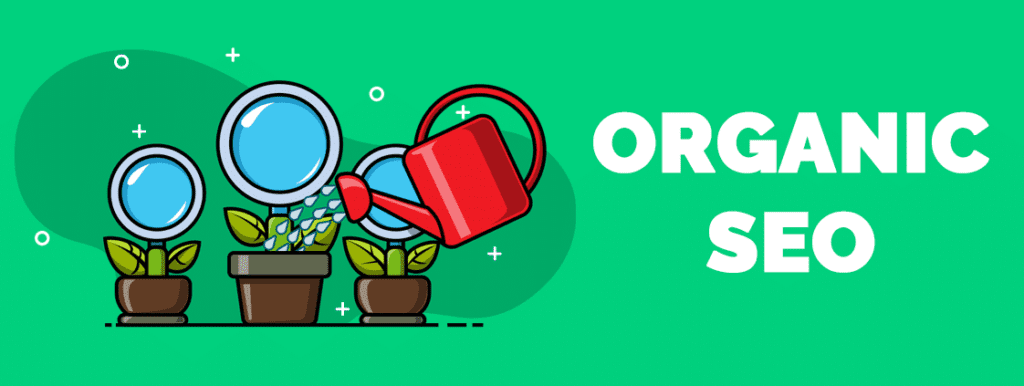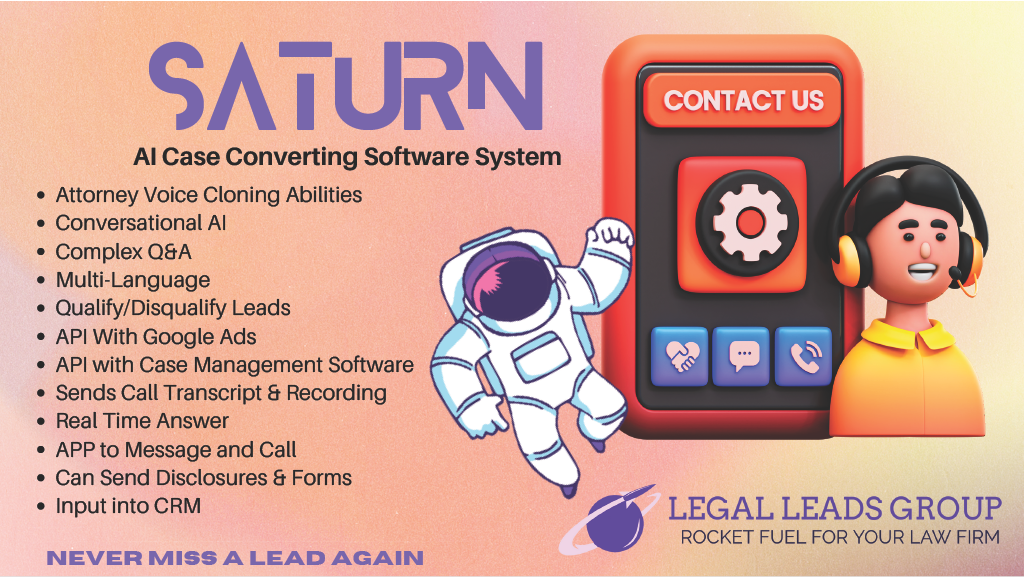Responsive search ads (RSAs) are a dynamic and versatile advertising format offered by Google Ads. They allow personal injury attorneys to create multiple headlines and descriptions, which Google then automatically tests to determine the best-performing combinations. This flexibility can significantly enhance your ad’s reach and effectiveness, making RSAs an essential tool for law firms looking to optimize their online presence.
Benefits of Responsive Search Ads
- Increased Reach and Flexibility: RSAs can adapt to show more relevant messages to potential clients. By providing multiple headlines and descriptions, your ads can appear in more searches and reach a broader audience.
- Improved Performance: Google uses machine learning to test different combinations of headlines and descriptions, automatically selecting the ones that perform best. This continuous optimization can lead to higher click-through rates and conversions.
- Time Efficiency: Instead of manually creating and testing different ad variations, RSAs automate the process, saving you time and effort while still delivering effective results.
- Enhanced Ad Relevance: By dynamically adjusting to match user queries, RSAs can improve ad relevance, which can lead to better ad positioning and lower costs per click.
Creating Effective Responsive Search Ads
To maximize the potential of RSAs, consider the following strategies:
- Diverse Headlines and Descriptions: Provide a variety of headlines and descriptions that highlight different aspects of your legal services. For example, include phrases like “Experienced Car Accident Lawyer,” “Free Consultation Available,” and “No Win, No Fee Guarantee.”
- Focus on Unique Selling Points: Emphasize what sets your law firm apart from competitors. This could be your years of experience, successful case outcomes, or personalized client service.
- Incorporate Keywords: Use relevant keywords in your headlines and descriptions to ensure your ads appear in pertinent searches. Keywords like “personal injury attorney” and “accident lawyer” can help attract the right audience.
- Utilize Ad Extensions: Enhance your RSAs with ad extensions, such as call buttons, location information, and site links, to provide additional value and encourage user interaction.
Challenges and Considerations
While RSAs offer numerous advantages, there are some challenges to keep in mind:
- Control Over Ad Combinations: Since Google automatically selects the best-performing combinations, you have less control over which headlines and descriptions are shown together. Ensure all combinations make sense and convey a coherent message.
- Monitoring and Adjustments: Regularly review performance data to understand which combinations are most effective. Use this information to refine your headlines and descriptions over time.
- Ad Approval Process: Ensure all content complies with Google’s advertising policies to avoid disapproval or delays in ad delivery.
Why Accident Injury Lawyers Should Utilize Responsive Search Ads
Responsive search ads provide personal injury attorneys with a powerful tool to enhance their online advertising efforts. By leveraging the flexibility and optimization capabilities of RSAs, law firms can increase their reach, improve ad performance, and ultimately attract more clients. For more insights and personalized assistance, visit Legal Leads Group.

The Difference Between Google Ads and Google LSAs AND How to Get More Case Leads
Google Local Service Ads and Manual vs Automatic Billing
Google Local Service Ads (LSAs) are a valuable tool for businesses, including law firms, to connect with local clients searching for specific services. Understanding the billing options available for LSAs is crucial for managing your advertising budget effectively. Google offers two primary billing methods: manual billing and automatic billing. Each option has its own advantages and considerations, allowing businesses to choose the one that best fits their financial management style and advertising goals.
Manual Billing
Overview: Manual billing requires advertisers to prepay for their ad campaigns. This method involves adding funds to your Google Ads account before your ads can run.
Advantages:
- Budget Control: Manual billing provides greater control over your advertising spend. By prepaying, you can set a strict budget limit, ensuring you never exceed your allocated funds.
- Spending Awareness: With manual billing, you are more aware of your spending habits, as you need to actively monitor and replenish your account balance.
- No Surprise Charges: Since you pay upfront, there are no unexpected charges, making it easier to manage cash flow and financial planning.
Considerations:
- Ad Delivery Interruptions: If your account balance runs out, your ads will stop running until you add more funds. This requires careful monitoring to ensure continuous ad delivery.
- Time-Consuming: Regularly adding funds can be time-consuming, especially for businesses with fluctuating advertising needs.
Automatic Billing
Overview: Automatic billing charges your account after your ads have accrued costs. This method allows for continuous ad delivery without the need for manual payments.
Advantages:
- Continuous Ad Delivery: Automatic billing ensures your ads run continuously without interruption, as charges are made automatically based on your ad activity.
- Convenience: This method is more convenient for businesses, as it eliminates the need to manually add funds and monitor account balances.
- Flexible Spending: Automatic billing allows for more flexible spending, accommodating changes in advertising needs without requiring immediate manual adjustments.
Considerations:
- Less Budget Control: Automatic billing may lead to less control over your budget, as charges are made after costs are incurred. It’s essential to set spending limits and monitor your account regularly.
- Potential for Overspending: Without careful monitoring, there’s a risk of overspending, especially if ad performance exceeds expectations.
Choosing the Right Billing Option
When deciding between manual and automatic billing for Google Local Service Ads, consider the following factors:
- Budget Management Style: If you prefer strict control over your budget and spending, manual billing may be more suitable. For those who prioritize convenience and continuous ad delivery, automatic billing might be the better choice.
- Business Cash Flow: Consider your business’s cash flow and financial planning needs. Manual billing requires upfront payments, while automatic billing spreads costs over time.
- Ad Campaign Goals: Align your billing choice with your advertising goals. If you anticipate fluctuating ad needs, automatic billing offers more flexibility.
Google Local Service Ads for Personal Injury Lawyers
Understanding the billing options for Google Local Service Ads is essential for effective budget management and campaign success. By weighing the advantages and considerations of manual and automatic billing, businesses can choose the method that best aligns with their financial strategies and advertising objectives. For more insights and personalized assistance, visit Legal Leads Group.

How to Get Better Impression Share with Google Local Service Ads
Impression share is a vital metric in digital advertising that measures the percentage of times your ads are shown compared to the total number of impressions they could potentially receive. For Google Local Service Ads (LSAs), a higher impression share means your ads are appearing more frequently in relevant searches, increasing your visibility to potential clients. Improving your impression share can lead to greater brand awareness, more leads, and ultimately, more business.
Factors Affecting Impression Share
- Budget: Your budget directly impacts how often your ads are shown. A limited budget may restrict your ad’s visibility, leading to a lower impression share.
- Ad Rank: Ad rank is determined by your bid, the quality of your ads, and the expected impact of ad extensions and other ad formats. A higher ad rank can improve your impression share.
- Targeting Settings: The geographic and demographic settings of your ads can influence impression share. Narrow targeting may limit the number of impressions your ads receive.
- Competition: The level of competition in your industry and location can affect your impression share. More competitors vying for the same audience can reduce your share.
Strategies to Improve Impression Share
- Increase Your Budget: If budget constraints are limiting your impression share, consider increasing your budget to allow your ads to appear more frequently. This can be particularly effective in competitive markets.
- Optimize Ad Rank: Focus on improving your ad rank by enhancing the quality and relevance of your ads. Use compelling headlines, clear calls to action, and relevant keywords to boost your ad’s performance.
- Refine Targeting: Review and adjust your targeting settings to ensure you’re reaching the right audience without being overly restrictive. Expanding your geographic or demographic reach can increase your potential impressions.
- Utilize Ad Extensions: Ad extensions can enhance your ads by providing additional information and increasing their visibility. Use extensions like call buttons, location information, and service highlights to improve your ad’s appeal.
- Monitor and Adjust Bids: Regularly review your bidding strategy to ensure you’re competitive in the auction. Adjusting your bids can help improve your ad’s position and increase impression share.
- Analyze Competitor Activity: Keep an eye on your competitors’ advertising strategies. Understanding their approach can help you identify opportunities to differentiate your ads and capture a larger share of impressions.
- Leverage Customer Reviews: Positive customer reviews can enhance your ad’s credibility and attractiveness. Encourage satisfied clients to leave reviews, and highlight these in your ads to improve engagement and impression share.
Measuring and Monitoring Impression Share
Regularly monitor your impression share through Google Ads reports to assess the effectiveness of your strategies. Analyze trends over time to identify areas for improvement and adjust your campaigns accordingly. By keeping a close eye on this metric, you can make informed decisions to enhance your ad’s visibility and performance.
More Impressions Equals More Chances to Land Quality Accident Case Leads
Improving impression share with Google Local Service Ads is crucial for maximizing your ad’s visibility and effectiveness. By implementing strategies to optimize your budget, ad rank, targeting, and more, you can increase your share of impressions and connect with more potential clients. For more insights and personalized assistance, visit Legal Leads Group.

Upside and Downside to Performance Max Campaigns for Accident Attorneys
Performance Max campaigns are a cutting-edge advertising solution from Google, designed to help businesses, including accident attorneys, achieve their marketing goals by maximizing conversions across all of Google’s inventory. These campaigns leverage machine learning to optimize ad performance in real-time, ensuring that your ads reach the right audience at the right time. For accident attorneys, Performance Max campaigns can be a powerful tool to increase visibility, attract more clients, and grow their practice.
Key Features of Performance Max Campaigns
- Comprehensive Reach: Performance Max campaigns allow you to advertise across all of Google’s platforms, including Search, Display, YouTube, Discover, Gmail, and Maps. This broad reach ensures that your ads are seen by potential clients wherever they are online.
- Goal-Oriented Optimization: These campaigns are designed to focus on specific marketing goals, such as lead generation or increasing website traffic. Google’s machine learning algorithms automatically optimize your ads to achieve these goals, making adjustments based on performance data.
- Automated Ad Creation: Performance Max campaigns use your provided assets (such as images, videos, and text) to automatically generate ads. This automation saves time and ensures that your ads are tailored to different formats and placements.
- Real-Time Insights: The platform provides detailed insights into campaign performance, allowing you to understand which assets and strategies are driving results. This data can inform future marketing decisions and strategies.
Benefits for Accident Attorneys
- Increased Visibility: By utilizing Google’s entire inventory, accident attorneys can significantly increase their online presence, reaching potential clients across multiple platforms.
- Efficient Lead Generation: The goal-oriented nature of Performance Max campaigns ensures that your advertising efforts are focused on generating high-quality leads, which is crucial for accident attorneys looking to expand their client base.
- Cost-Effective Advertising: With automated optimization, these campaigns can help maximize your return on investment by ensuring that your budget is spent on the most effective ad placements and formats.
- Time Savings: The automation of ad creation and optimization reduces the time and effort required to manage campaigns, allowing attorneys to focus more on their practice.
Potential Downsides
- Less Control Over Ad Placements: One of the main drawbacks of Performance Max campaigns is the reduced control over where and how your ads are displayed. This can be a concern for attorneys who want to maintain a specific brand image or target a niche audience.
- Dependence on Machine Learning: While machine learning can optimize performance, it may not always align with your specific business insights or strategies. It’s important to regularly review campaign performance and make adjustments as needed.
- Complexity in Reporting: The comprehensive nature of these campaigns can make it challenging to attribute specific results to individual platforms or ad formats, complicating performance analysis.
Best Practices for Accident Attorneys
- Define Clear Goals: Before launching a Performance Max campaign, clearly define your marketing goals, such as increasing consultation bookings or enhancing brand awareness. This will guide the campaign’s optimization efforts.
- Provide High-Quality Assets: Ensure that you provide a variety of high-quality images, videos, and text assets. This will enable the automated system to create compelling ads that resonate with your target audience.
- Monitor and Adjust: Regularly review the performance insights provided by Google to understand what’s working and what isn’t. Be prepared to adjust your strategy and assets based on these insights.
- Leverage Audience Signals: Use audience signals to guide the machine learning algorithms in understanding who your ideal clients are. This can improve targeting and lead quality.
Utilizing Performance Max for Personal Injury Attorney Lead Generation
Performance Max campaigns offer accident attorneys a powerful way to enhance their online advertising efforts by leveraging Google’s extensive reach and advanced optimization capabilities. While there are potential downsides, such as reduced control over ad placements, the benefits of increased visibility and efficient lead generation make these campaigns a valuable tool for growing a legal practice. For more insights and personalized assistance, visit Legal Leads Group.

Using Quality Headlines and Ad Copy to Improve Quality and Optimization Scores
In the world of digital advertising, the headlines and ad copy you use are critical components that can significantly impact your ad’s performance. They are often the first elements that potential customers see, and they play a crucial role in capturing attention, conveying your message, and encouraging action. High-quality ad content not only improves your ad’s quality and optimization scores but also leads to better click-through rates (CTR) and conversions.
Key Elements of Effective Headlines and Ad Copy
- Relevance: Ensure that your headlines and ad copy are highly relevant to the keywords and search queries you are targeting. This relevance helps improve your ad’s quality score and makes it more likely to resonate with your audience.
- Clarity: Use clear and concise language to convey your message. Avoid jargon or complex terms that might confuse your audience. The goal is to communicate your value proposition quickly and effectively.
- Compelling Value Proposition: Highlight what makes your product or service unique. Whether it’s a special offer, a unique feature, or a benefit, make sure your audience understands why they should choose you over competitors.
- Strong Call to Action (CTA): Encourage your audience to take the next step with a clear and compelling CTA. Whether it’s “Learn More,” “Sign Up Today,” or “Get a Free Quote,” your CTA should guide users toward the desired action.
- Emotional Appeal: Tap into the emotions of your audience by using language that resonates with their needs and desires. Emotional appeal can be a powerful motivator for action.
Tips for Writing Effective Headlines
- Use Numbers and Statistics: Headlines with numbers or statistics can grab attention and convey a sense of authority. For example, “Boost Your Sales by 30% with Our Proven Strategies.”
- Ask Questions: Engaging your audience with a question can pique their curiosity and encourage them to learn more. For example, “Are You Ready to Transform Your Business?”
- Incorporate Keywords: Including relevant keywords in your headlines can improve your ad’s visibility and relevance to search queries.
- Keep It Short and Sweet: Aim for headlines that are concise yet impactful. A good rule of thumb is to keep them under 60 characters.
Tips for Writing Effective Ad Copy
- Focus on Benefits, Not Features: While features are important, it’s the benefits that truly sell. Explain how your product or service can solve a problem or improve the user’s life.
- Use Active Voice: Active voice makes your ad copy more direct and engaging. For example, “Save Time with Our Easy-to-Use App” is more compelling than “Time Can Be Saved with Our App.”
- Create Urgency: Encourage immediate action by creating a sense of urgency. Phrases like “Limited Time Offer” or “Act Now” can motivate users to click.
- Test and Optimize: Continuously test different versions of your ad copy to see what resonates best with your audience. Use A/B testing to compare performance and make data-driven decisions.
Applying SEO Tactics to Google Ads Copy to Get a Better Score to Lower Cost Per Click
Crafting quality headlines and ad copy is essential for maximizing the effectiveness of your digital advertising campaigns. By focusing on relevance, clarity, and a compelling value proposition, you can create ads that not only capture attention but also drive meaningful engagement and conversions. Remember to continuously test and refine your ad content to ensure it remains aligned with your audience’s needs and preferences. For more insights and personalized assistance, visit Legal Leads Group.

How Saturn AI Can Help Law Firms Get Better Conversions with Google Ads
